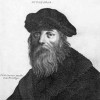
Pythagoras
Pythagoras Spiritual Wisdom and Philosophy Art, EducationPythagoras (560-480 BC)
Esoteric teachings of Golden Citizens of Ancient Greece
Pythagoras Endless wisdom One of the greatest Greek philosophers, a teacher, and a sage
Pythagoras lived at the same time as Buddha and Lao Tzu and he taught his disciples that a soul goes through an endless wheel of reincarnations until we purify and return to the divine.
Pythagoras formed The Pythagorean Brotherhood, one of the first un-priestly scientific societies teaching philosophy and science. Both men and women were allowed to become members of the order.
Pythagoras of Samosa was an ancient Ionian Greek philosopher. His teachings influenced the philosophies of Plato, Aristotle, and the Western consciousness research.
Pythagoras teaching holds that every soul is immortal and, upon death, enters into a new body, he is credited with the Pythagorean theorem, Pythagorean tuning, the Theory of Proportions, the sphericity of the Earth, and the identification of the planet Venus. Pythagoras influenced Plato, whose dialogues, especially his Timaeus, are our closest records of Pythagorean teachings. Pythagoras philosophy had a major impact on scientists such as Nicolaus Copernicus, Johannes Kepler, and Isaac Newton. Pythagorean symbolism was used throughout early modern European esotericism.
No authentic writings of Pythagoras have ever survived.
Like many other important Greek thinkers, Pythagoras was said to have studied in Egypt. Aparently, Pythagoras learned to speak Egyptian from the Pharaoh Amasis II himself, and he studied with the Egyptian priests at Diospolis (Thebes), and that he was the only foreigner ever to be granted the privilege of taking part in their worship. Plutarch (46 – 120 AC) writes in his treatise On Isis and Osiris that, during his visit to Egypt, Pythagoras received instruction from the Egyptian priest Oenuphis of Heliopolis. According to the Christian theologian Clement of Alexandria ( 150 – 215 AC), "Pythagoras was a disciple of Soches, an Egyptian archprophet, as well as Plato of Sechnuphis of Heliopolis." Diogenes Laërtius asserts that Pythagoras later visited Crete, where he went to the Cave of Ida with Epimenides.
The Phoenicians are reputed to have taught Pythagoras arithmetic and the Chaldeans to have taught him astronomy.
The Neoplatonists "sacred discourse" claim that Pythagoras had written the sacred text in the Doric Greek dialect, spoken by the Orphic priest Aglaophamus.Pythagoras's teachings were definitely influenced by Orphism. Pythagoras and Pherecydes also appear to have shared similar views on the soul and the teaching of metempsychosis.
Pythagoras ancient Greece numbers Monad Triad
Pythagoras primery numbers symbolical meaning of three four five six ten
In Croton
While he was on Samos, Pythagoras founded a school known as the "semicircle". The school became so renowned that the brightest minds in all of Greece came to Samos to hear Pythagoras teach. Pythagoras himself dwelled in a secret cave, where he studied in private and occasionally held discourses with a few of his close friends.
Around 530 BC, when Pythagoras was around forty years old, he left Samos. He arrived in the Greek colony of Croton (today's Crotone, in Calabria) in what was then Magna Graecia. Later biographers tell fantastical stories of the effects of his eloquent speeches in leading the people of Croton to abandon their luxurious and corrupt way of life and devote themselves to the purer system which he came to introduce. According to Porphyry, Pythagoras married Theano, a lady of Crete and had a number of kids.
Metempsychosis or Reincarnation
One of Pythagoras's main doctrines was metempsychosis, the belief in reincarination, that all souls are immortal and that, after death, a soul is transferred into a new body. According to Porphyry, Pythagoras taught that the seven Muses were actually the seven planets singing together.
When Pythagoras was asked why humans exist, he said, "to observe the heavens". He practiced divination and prophecy. he usually appears either in his religious or priestly guise, or else as a lawgiver.
“The so-called Pythagoreans, who were the first to take up mathematics, not only advanced this subject, but saturated with it, they fancied that the principles of mathematics were the principles of all things.” Aristotle, Metaphysics 350 BC
According to Aristotle, the Pythagoreans used mathematics for solely mystical reasons.
They believed that all things were made of numbers. The number one (the monad) represented the origin of all things and the number two (the dyad) represented matter. The number three, a triangle was the symbol of the god Apollo. The number four signified the four seasons and the four elements. They believed that odd numbers were masculine and that even numbers were feminine,
Ten was regarded as the "perfect number"
Pythagoreans Celebrate the Sunrise (1869) by Fyodor Bronnikov
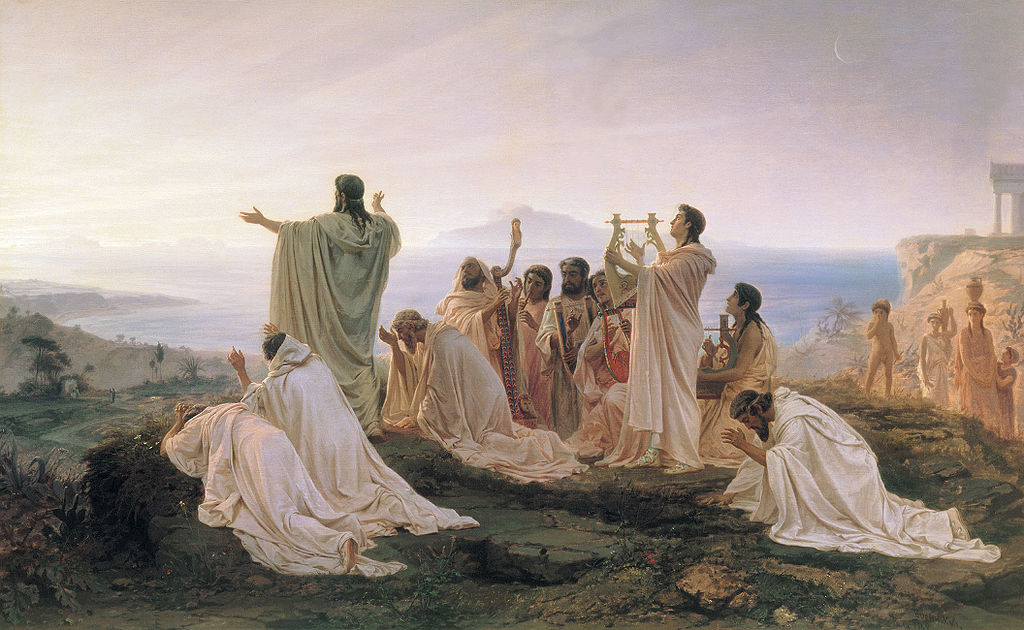
Pythagoreans Celebrate the Sunrise (1869) by Fyodor Bronnikov
Painting showing a group of people dressed in white standing at the edge overlooking the sea watching as the sun rises. Both of his arms are raised into the air. The three men closest to him, are kneeling praying. Behind them, an older man plays a harp and two women play lyres. A man in the foreground kneels prayerfully towards the sunrise.
Pythagoras were the first to teach that the Earth was spherical, the first to divide the globe into five climactic zones
Pythagorean communities existed in Magna Graecia, Phlius, and Thebes during the early fourth century BC.
Aristotle tells us that the philosophy of Plato was heavily dependent on the teachings of the Pythagoreans. Plato's Republic is based on the "tightly organised community of like-minded thinkers" established by Pythagoras at Croton.
The earliest Greek natural philosophies believed that nature expressed itself in ideal forms and was represented by a type (εἶδος), which was mathematically calculated.
Porta Maggiore Basilica in Rome 100 AC
The oldest known Pythagorean Temple is the Porta Maggiore Basilica, a subterranean basilica which was built during the reign of the Roman emperor Nero as a secret place of worship for Pythagoreans. The basilica's apse is in the east and its atrium in the west out of respect for the rising sun.
It has a narrow entrance leading to a small pool where the initiates could purify themselves.
The building is also designed according to Pythagorean numerology, with each table in the sanctuary providing seats for seven people. Three aisles lead to a single altar, symbolizing the three parts of the soul merging with One, the unity of Apollo.
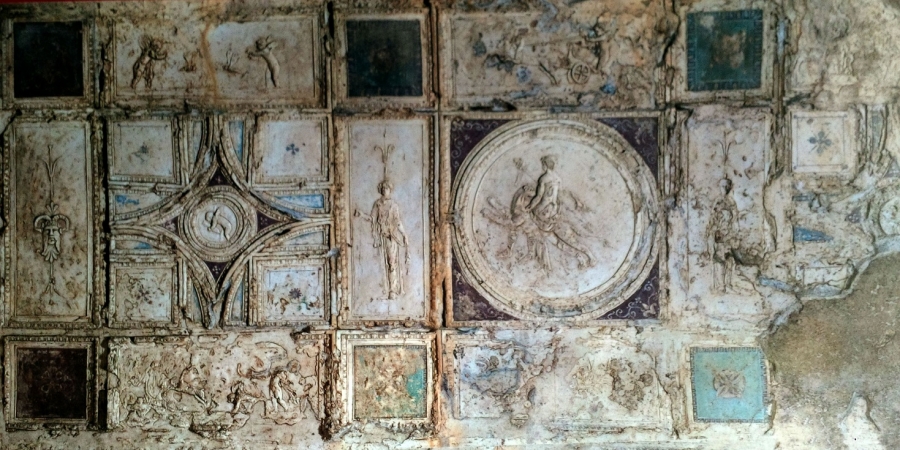
Underground basilica of Porta Maggiore Rome Pythagoreans 100 BC Fresco
The emperor Hadrian's Pantheon in Rome was also built based on Pythagorean numerology.
Hadrian's Pantheon in Rome, depicted in this eighteenth-century painting by Giovanni Paolo Panini, was built according to Pythagorean teachings
Johannes Kepler considered himself to be a Pythagorean. Kepler titled his book on the subject Harmonices Mundi (Harmonics of the World), after the Pythagorean teaching that had inspired him.
Isaac Newton firmly believed in the Pythagorean teaching of the mathematical harmony and order of the universe.
On vegetarianism
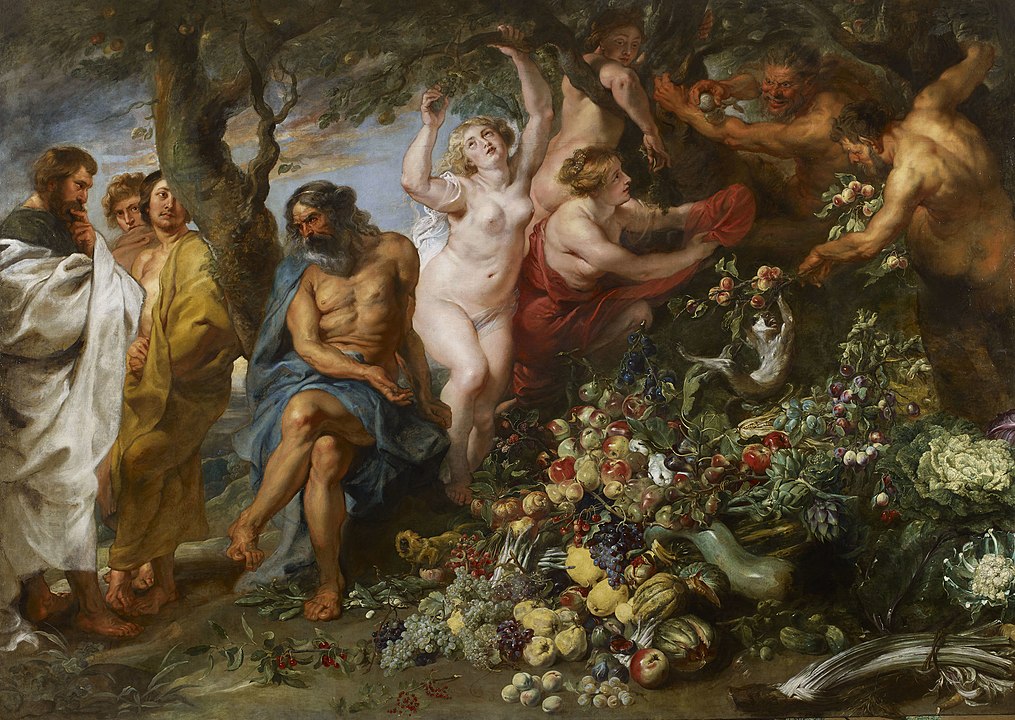
Pythagoras Advocating Vegetarianism 1630 by Peter Paul Rubens, Italy
Pythagoras Advocating Vegetarianism (1618–1630) by Peter Paul Rubens was inspired by Pythagoras's speech in Ovid's Metamorphoses.
The Sentences of SeXtus
The Sentences of Sextus is a Hellenistic Pythagorean text. The earliest mention of the Sentences is in the mid 3rd century. the work had become attributed to Pope Sixtus.
Sextus was a Pythagorean.
The soul is illuminated by the recollection of deity
Bear that which is necessary, as it is necessary
Be not anxious to please the multitude
Esteem nothing so precious, which a bad man may take from you
Use lying like poison or Guard yourself from lying. (Because when you lie) there is a deceiver and the deceived.
Nothing is so peculiar to wisdom as truth
Wish that you may be able to benefit your enemies
A wise intellect is the mirror of God
Cast away any part of the body that would cause you not to live abstinently. For it is better to live abstinently without this part than ruinously with it. (quoted by Origen)
The Rules are by Quintus Sextius, who lived in the 1st century BC.
In the 1st century BC, Neopythagoreanism was an attempt to re-introduce a mystical religious element into Hellenistic philosophy.
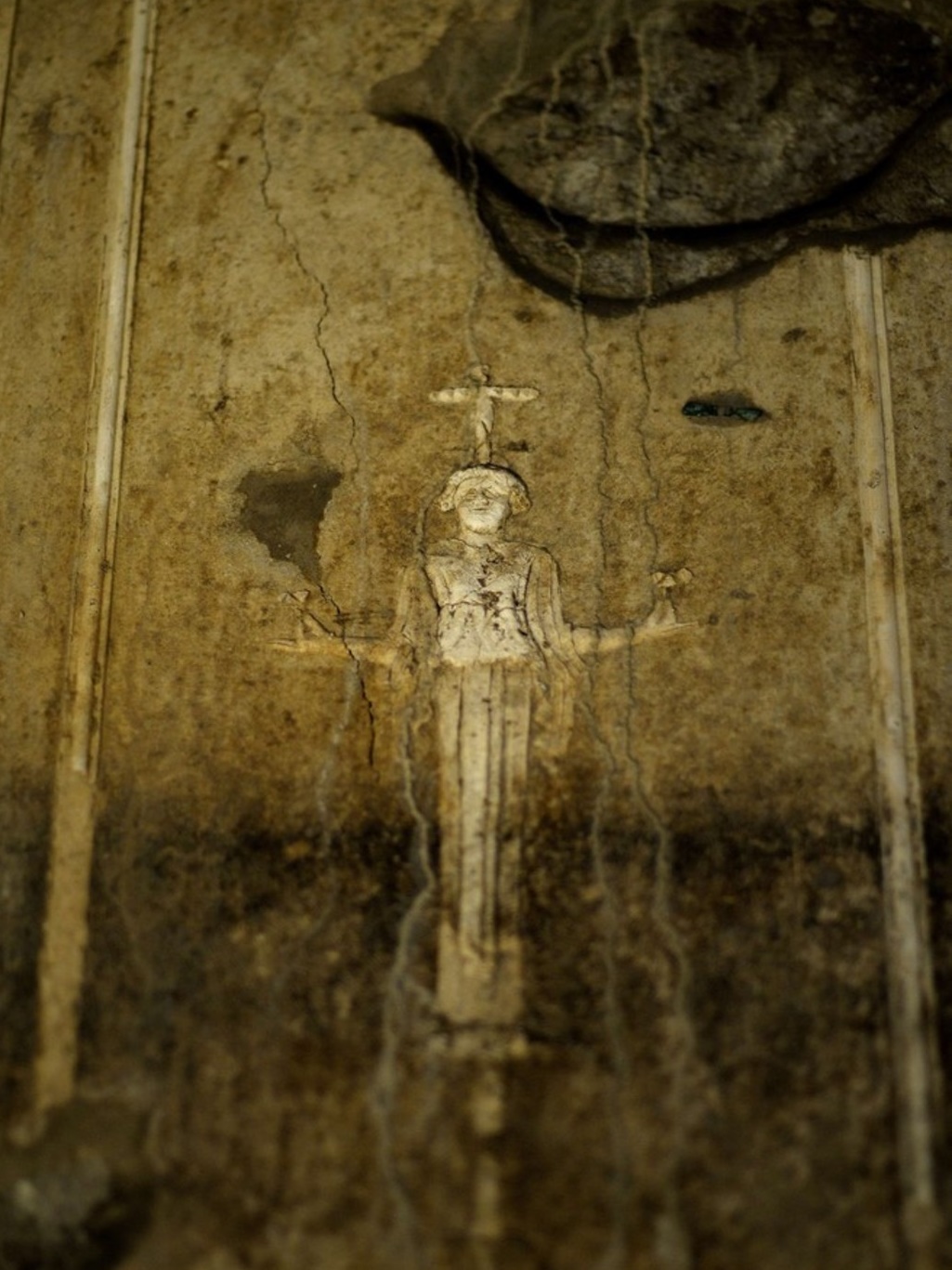
The Porta Maggiore Basilica where Neopythagoreans held their meetings in the 1st century, in Rome (discovered 1915)
Neopythagoreanism held that union with the divine was possible through ascetic living and contemplation of the cosmic order. The movement of souls to and from the underworld (Orpheus, Sappho) and transitions from one state of being to another (Ganymede, the Dioscuro and Leucippid) on the basilica decorations.
Download free eBook Complete Pythagoras
Pythagoras taught that numbers had qualities and that geometric figures were powerful magical symbols.
His institute had three circles of initiates:
- The outer circle lived in their own houses, had possessions, and studied at the Institute.
- The inner order lived within the society, had no possessions, and were required to be vegetarians.
- The third level of initiates were the 'electi' who were initiated in all the spiritual disciplines.
Pythagoras believed that:
- the reality is mathematical in nature
- the earth is round
- that the Soul is immortal, changing from one body to another rising to its union with the Divine
Pythagora and Occult Knowldge
We are here to inspire your Spiritual Development
Pythagoras Quotes
Pythagoras about thought
- Thought is an Idea in transit, which when once released, never can be lured back, nor the spoken word recalled. Nor ever can the overt act be erased All that thou thinkest, sayest, or doest bears perpetual record of itself, enduring for Eternity.
Pythagoras about being human and God
- Man know thyself; then thou shalt know the Universe and God.
- Concern should drive us into action and not into a depression. No man is free who cannot control himself.
Pythagoras about doing it now
- If thou intend to do any good; tarry not till to-morrow! for thou knowest not what may chance thee this night.
Pythagoras about virtues and evil
- Evil destroyeth itself.
- Virtue is harmony.
Pythagoras about man and animals
- As long as man continues to be the ruthless destroyer of lower living beings he will never know health or peace. For as long as men massacre animals, they will kill each other.
Pythagoras about Reason and Wisdom
- Reason is immortal, all else mortal.
- The oldest, shortest words - "yes" and "no" - are those which require the most thought.
- The soul of man is divided into three parts, intelligence, reason, and passion. Intelligence and passion are possessed by other animals, but reason by man alone.
- In anger we should refrain both from speech and action.
- None but God is wise.
- As soon as laws are necessary for men, they are no longer fit for freedom.
Pythagoras about Truth
- Truth is so great a perfection, that if God would render himself visible to men, he would choose light for his body and truth for his soul.
Pythagoras about Number
- Number is the ruler of forms and ideas, and the cause of gods and daemons.
Leonardo's drawing of a man in a square
Leonardo further develops Pythagoras' idea that the circle is a symbol of the soul, and the square a symbol of the earthy existence. Both circle and the square are used together to represent the merge of Divine and Earthy Nature within a Human.
Mysticism or Magic
Babylon Mysticism
Amorites as first fighters for Justice Freedom Equality 2000 BC

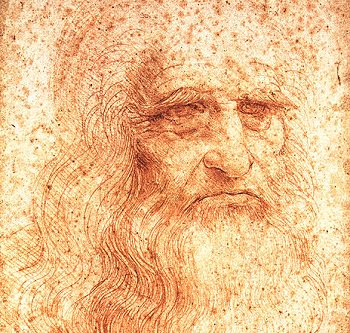





Pythagoras No comments on Pythagoras: